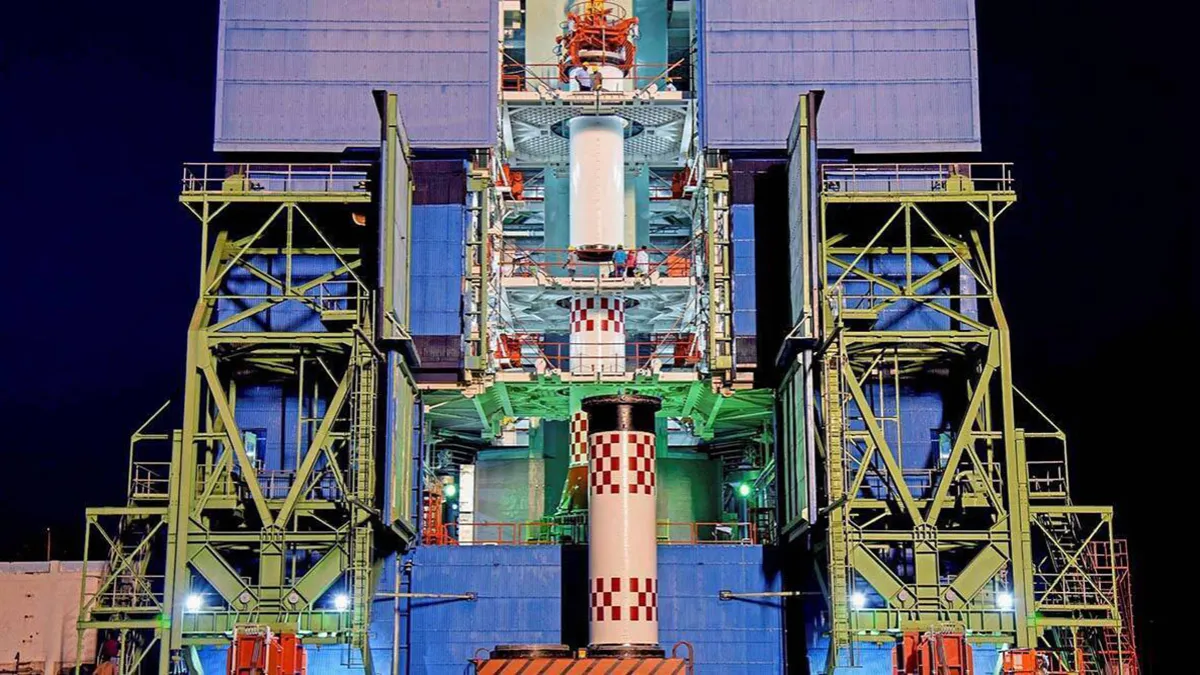Isro makes structural and logic changes to ensure success of SSLV-D2 after SSLV-D1 launch failure
07 Feb 2023
News
With the second development flight of Isro’s new Small Satellite Launch Vehicle (SSLV-D2) scheduled for February 10, a failure analysis report on why satellites were not injected in desired orbits during the August launch suggests that it was because of vibrations picked up by the accelerometers on-board, which led to the systems thinking that they were faulty.
With some changes made to the structures and internal logics, the satellite launch vehicle will carry the Indian Space Research Organisation’s (Isro) own earth observation satellite EOS-07, AzaadiSat2 and Janus-1, weighing 334 kg, in a 450-km circular orbit later this month.
The satellites on-board SSLV-D1 were placed in a highly elliptical orbit during the August launch due to a shortfall in velocity, with orbits decaying soon after, making the satellites unusable. This happened despite the first three solid stages working as they should.
A recently released summary of the failure analysis report by Isro shows that during the separation of the second stage, there were vibrations exceeding in frequency and time duration than expectations or ground-test levels. These vibrations were picked up by the six accelerometers on-board, readings from which are used to correct the attitude of the vehicle during the mission.
Because of the importance of accurate readings, a failure logic keeps an eye on the readings from the sensors, and identifies and isolates their readings for a more accurate mission. However, when they picked up the vibrations during the second stage separation, a lot of differences were observed between readings of the accelerometers during a 2-second window that led to the failure logic thinking that all six accelerometers were faulty and initiating salvage mission mode.
Although the accelerometers were found to be functioning well after this transient event, data from them were not utilised for the rest of the mission. The mission switched to a time-based guidance without any feedback on the velocity of the vehicle as the accelerometer readings were not being used. And, the third solid stage did switch on as scheduled but the final liquid propellant-based velocity trimming module (VTM) did not.
This was because it was programmed to not do so for salvage missions as it could be a deterrent to the success of the mission in such cases. Because of the shortage of about 56 m/s at the end of SS3 burn out in final velocity and loss in pointing accuracy due to sensor errors, the targeted orbit could not be achieved. “This indicates that execution of salvage option in all situations need not always lead to successful placement of satellites in an orbit,” the report said.
To ensure that it does not happen again, the report suggests that for the second development flight, the mechanism for separation of the second stage be changed to reduce vibrations. It also suggests a change in the logic of the system to handle such transient events – in cases where multiple sensors are identified to be faulty, readings will be taken for longer duration before going into salvage mode. In case of failure of sensors, the system will be able to navigate using NaVIC (Indian Regional Navigation Satellite System) data. And in case of failure of sensors and data from NaVIC not being available for more than 10 seconds, the vehicle will still get to decide whether the last VTM stage needs to be used even in salavage mode to ensure the minimum required orbit.
